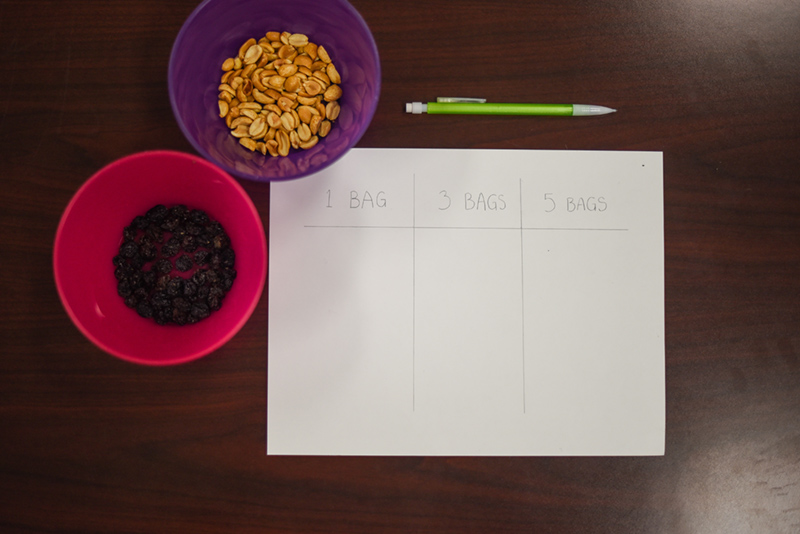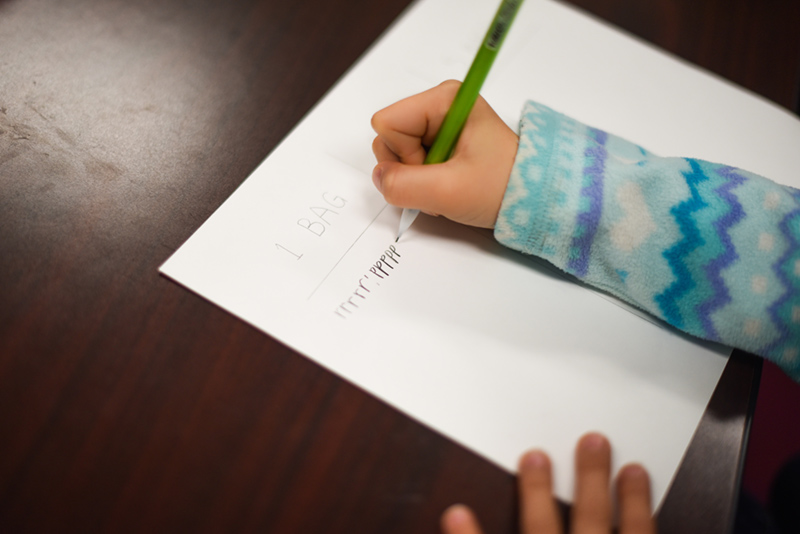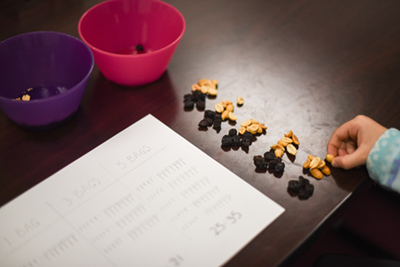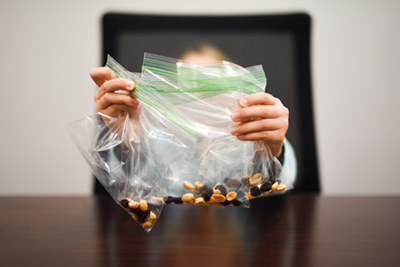
Ratios compare two quantities that are related. It’s a concept that can be challenging for kids to understand. As a child, I could solve problems related to ratios, but I never quite “got it” . . . that is, until my mother was teaching me how to half a recipe. For the recipe to work, the relationship of all the ingredients needed to remain the same. So, we divided all of the parts by two.
My mom wasn’t trying to teach me a math lesson that day, but she pointed out how important ratios are in the kitchen to solve a basic problem. I received understanding that day by getting my hands involved in learning as we solved an actual problem.
We can help children begin with understanding if we start teaching math with a hands-on activity that solves a real-world problem. So here’s a simple activity to help children master the concept of ratios and use them to solve a problem. I found the inspiration for this activity in BJU Press’s Math 5 Teacher’s Edition, where you can find scores of other hands-on activities that can help your children understand math concepts.
Making a snack
We want to make a simple trail mix for a hike. Each member of our family needs a miniature snack bag of raisins and peanuts.
We want to have a consistent snack bag, so each bag needs to have 5 raisins for every 7 peanuts. Ratios can help us get the right amount of ingredients for every family member to have the same snack.

Sketching out the ratios
Let’s start with paper and pencil, but without diving into abstract equations. To help children grasp the idea of ratios, we can represent each raisin with the letter r and each peanut with the letter p. We use a colon instead of the word to. Let’s start with just one bag.
1 bag
- rrrrr:ppppppp
Your child probably won’t need to count, but let’s write out the ratio for one bag.
5 raisins: 7 peanuts
So counting the r’s and p’s will be more helpful when determining the number of raisins and peanuts needed for the three children on the hike.

3 bags (3 children on the hike)
- rrrrr:ppppppp
- rrrrr:ppppppp
- rrrrr:ppppppp
15 raisins: 21 peanuts
How many r’s are there? How many p’s?
Does the number of raisins or peanuts change for each bag? This question helps your child see that a ratio is expressing a consistent relationship, in this case raisins and peanuts in the miniature snack bag.
Now let’s suggest we make bags for Mom and Dad too.
5 bags (total family members)
- rrrrr:ppppppp
- rrrrr:ppppppp
- rrrrr:ppppppp
- rrrrr:ppppppp
- rrrrr:ppppppp
25 raisins: 35 peanuts
Now your child can count the r’s and p’s or multiply each number in the ratio by 5 to determine the total number of raisins and peanuts needed for the hike. You might also want to mention to your fifth grader that writing out r’s and p’s is useful for seeing how ratios work, but it’s not a fast way to solve the problem. Multiplying is the quickest way to solve with ratios.
So for the whole family, we need 25 raisins and 35 peanuts.
Now have your fifth grader count out the total number of raisins and peanuts into distinct piles of 5 raisins and 7 peanuts each. Then put the piles into sandwich bags. Of course, you could adjust the snack portions according to your family’s needs. Now you’re ready for a hike!
Using Ratios
Ratios are useful in helping us determine the total needed before we begin the project. That way we can check our supplies before we get started and make a run to the grocery store if needed. Once we’re ready to begin a project, the ratios help us create consistent snacks.
Consistency is critical in baking at home. But ratios also help construction workers, restaurant owners, manufacturers, and a host of other professionals as they order the appropriate amounts of supplies before they begin a large-scale project. And they will use ratios to consistently use those supplies. When children see how they can use ratios like professionals do in planning and executing projects, they will have a concrete understanding of the concept.